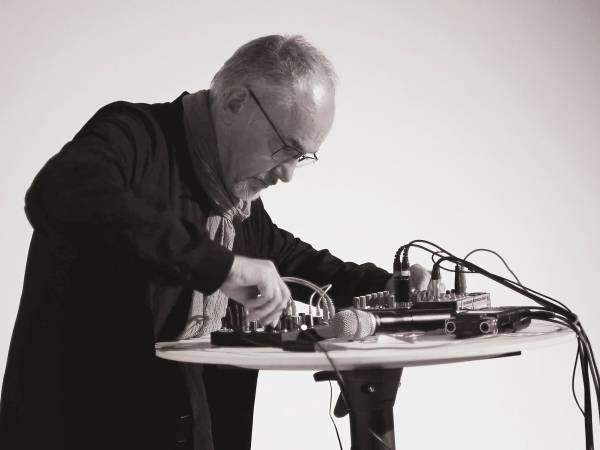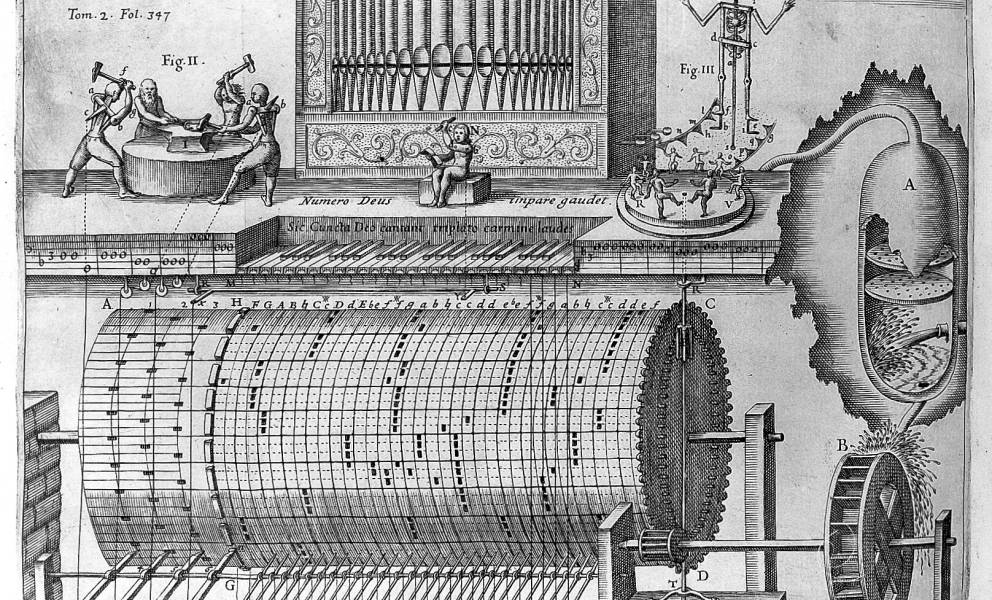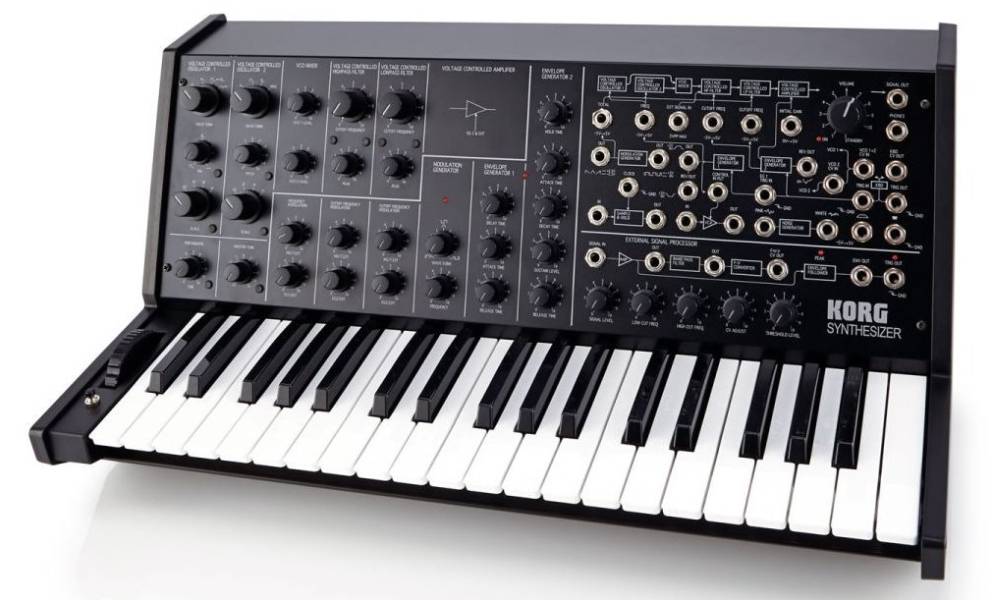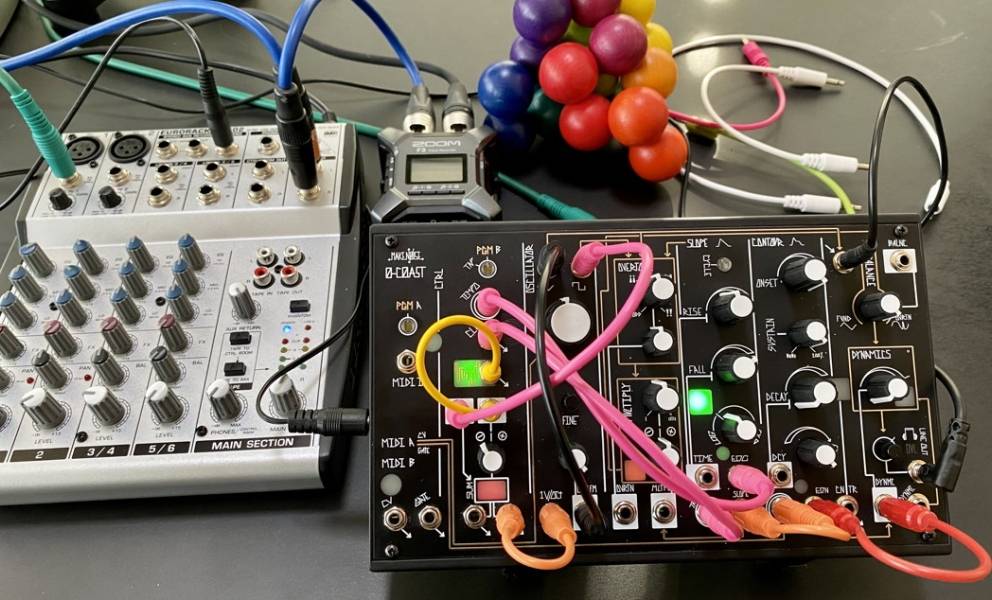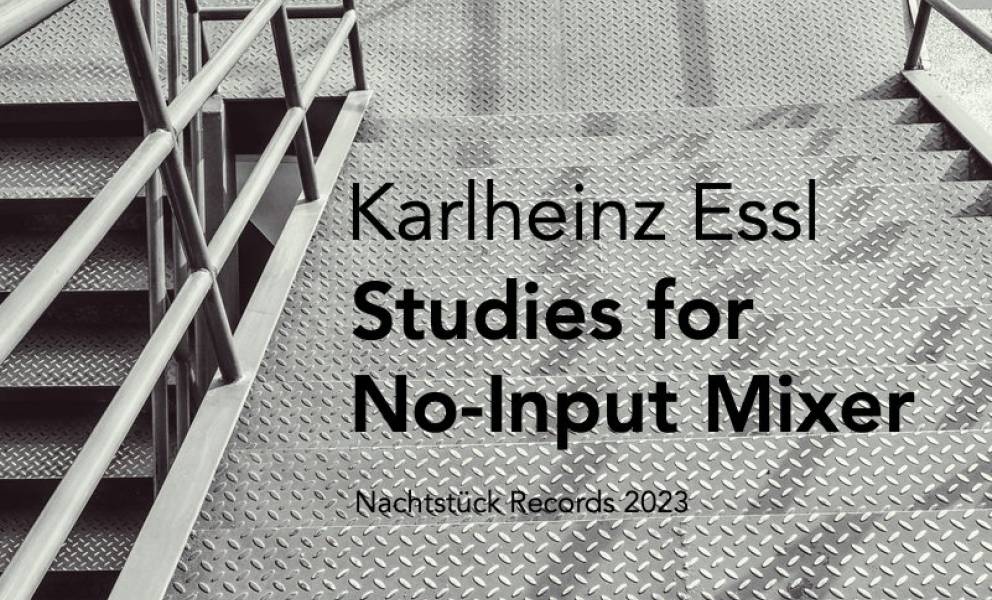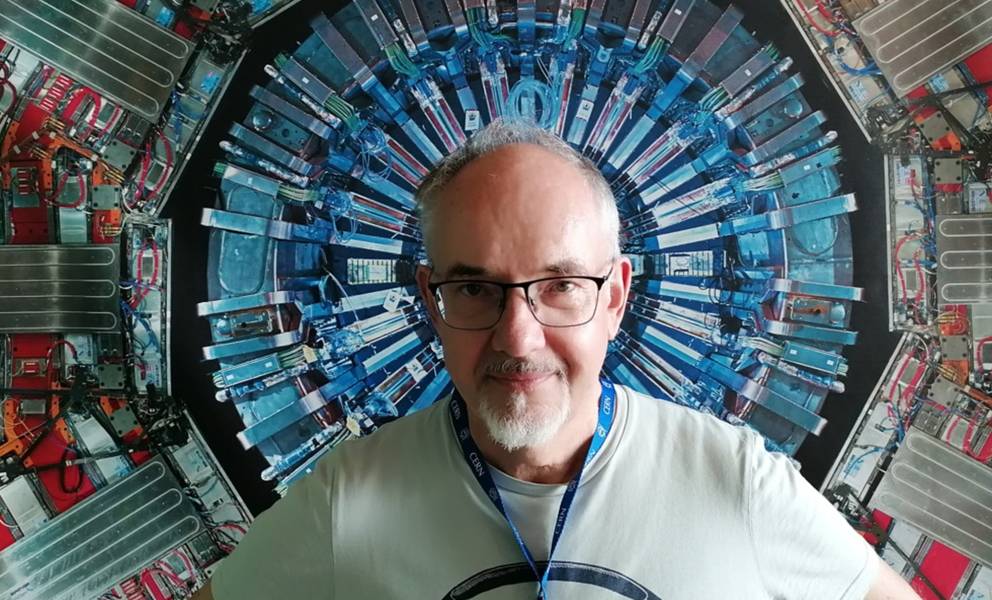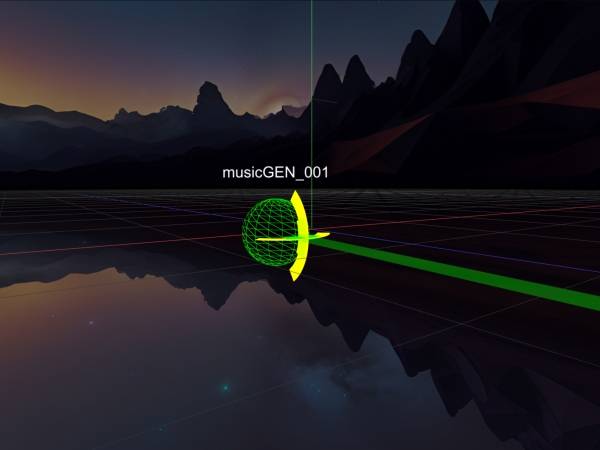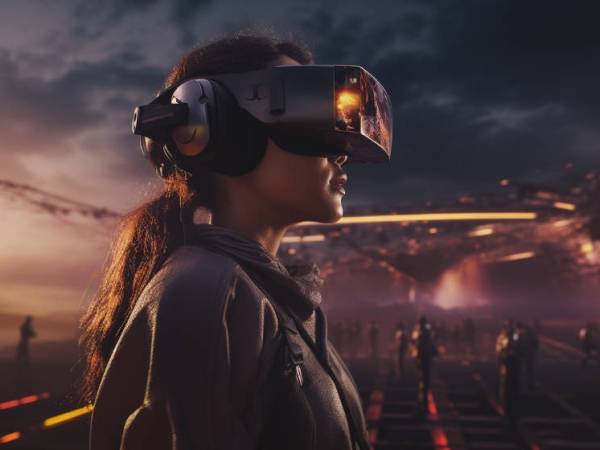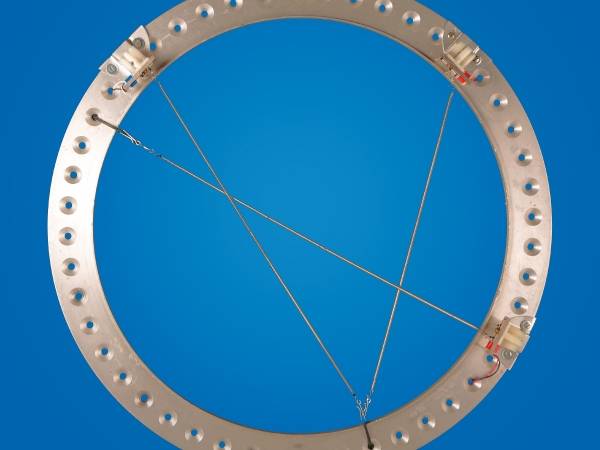5 Minuten
Athanasius Kircher: Pythagorean Musical Automaton, Musurgia Universalis (1650), tom. II, vol. IX, fol. 347
I have been working with computers in the field of music composition for almost 40 years. For my first computer, an Atari ST I bought in 1985, there existed hardly any useful software. So you were forced to program everything yourself. I developed my own software library for algorithmic composition in Logo, which I ported to the real-time programming environment Max in 1991 while working at IRCAM. This so-called Realtime Composition Library (RTC-lib) - a constantly evolving software library for algorithmic composition - has become an important toolbox for electroacoustic experiments and compositions, not only for me.
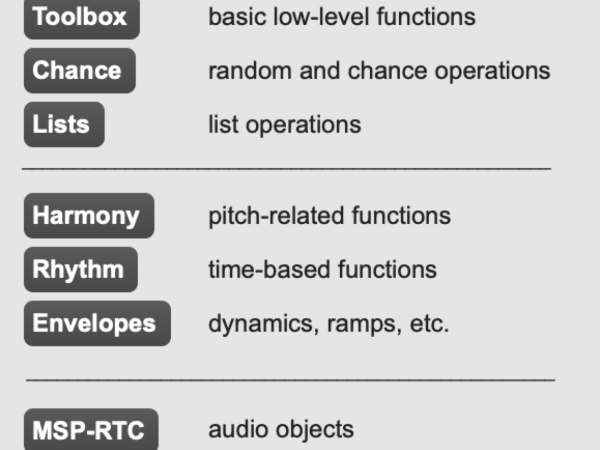
Screenshot Real Time Composition Library
Crisis as a Chance
During the summer 2022 I fell into a deep crisis - not least because of the war in Ukraine - which also brought my artistic activities to a standstill. It was no longer possible for me to continue my work with my accustomed and beloved methods. I realised that I had to leave my comfort zone and enter new territory once again. But how can I compose electronic music without computers and software?
During a general "digital detox" I was looking for new possibilities. In the archives of my studio, I came across some old voltage-controlled analogue synthesizers that I had experimented with a long time ago, like the legendary KORG MS-20.
By connecting the different modules – voltage-controlled oscillators, filters, function generators or modulators – with patch chords, one can create individual setups that define an instrument and it’s behaviour. However, apart from this welcome architectural openness, I found it difficult to realise my artistic ideas. These synthesizers have been designed for a genre of music that I'm not particularly interested in. In addition, many of them are equipped with keyboards, which is an absolute "no-go" for me, as it represents a concept of musical thinking based on notes, which does not play a major role for me in the field of experimental electronic music.
All along the Coastline
My friend Gerhard Eckel, who teaches at the Institute for Electronic Music at the University of Music in Graz, suggested that I take a closer look at the MakeNoise 0-COAST Synthesizer, which features a rather unconventional system architecture.
Based neither on the classic Moog synthesizer of the East Coast nor on the Buchla system of the West Coast – hence the name „Zero Coast“ – it tries to combine the best of both worlds. Although it is possible to connect a keyboard or MIDI sequencer, this was out of the question for me anyway.
I have to admit that it was quite a challenge to submit to a system that I had not built from scratch. And it took a lot of sometimes frustrating experimentation to get reasonable sounds out of this little box, because the wiring possibilities are enormous. Also, the individual control signals and parameters cannot be considered in isolation, as they are interdependent. Finally, it's almost impossible to recall the state of the system, which can't be stored. Everything seems very fragile and volatile.
During my research, I discovered how feedback routings can create nonlinear systems with chaotic states that sound fascinating. However, this requires constant balancing of the control signals with the countless knobs. Performing live on this newly constructed 'instrument' becomes an adventure that leaves a sonic trail: It's like riding a wild horse across Lake Constance. Perhaps the perfect metaphor for the critical situation most of us are experiencing these days.
This was the beginning of my work-in-progress Coastlines, which is documented on my YouTube channel. To date, there are over 50 videos recorded in my studio. Each one demonstrates a different patching and playing method on my 0-COAST modular synthesizer.
In the summer of 2023, I spent a few days at the CERN, the European Centre for Particle Physics located between Switzerland and France. While exploring the huge campus with its large accelerators and impressive detectors, I played four Coastline performances at different locations, only with my 0-COAST and a small battery-powered portable speaker.
From Studio to Stage
After months of fruitful experiments in my studio, I began to explore how to play this strange instrument in a live situation on stage - alone and with others.
My first public performance with the 0-COAST took place during my portrait concert at the Künstlerhaus Vienna in September 2022, which was moderated by the writer Erwin Uhrmann. After the show he expressed his interest in working with me, which I gladly accepted. Since then we meet regularly in my studio for so-called Coastline Sessions, where we experiment with new ways of improvising text and sound without prior consultation. In this setting, we form a feedback system in which the sound of my synthesizer triggers Erwin's textual imagination, which in turn influences my playing.
This recording was made without prior consultation on August 1, 2023. On this day, contact with the Voyager 2 space shuttle had been lost. It has been traveling in deep space since 1977 and is currently 20 billion kilometers away from Earth. Through artistic means, we imagined what might have happened that very day - in real time!
In September 2023 we gave our first performance for a selected audience in the library of the Monastery of Klosterneuburg, where we explored the historical setting and brought influential books of the Baroque period to life, including Athanasius Kircher's Ars Magna Lucis et Umbrae, the Musurgia Universalis and the multi-volume work Danubius Pannonico-Mysicus by Luigi Ferdinando Marsigli.
Bare Bones
The final step in this transformation process from digital to analog occurred recently when I asked myself how I could reduce my technical resources even further. Is it possible to create electronic music not only without computers, but also without synthesizers?
In the summer of 2023, I started experimenting with a broken analog mixer I found in my studio. Still sticking to the idea of non-linear feedback systems, I explored different kinds of interaction on this analog device, generating sounds only by feeding the output back into the input, controlled in an instrumental way with faders and knobs, where the slightest movement of the fingers can drastically change the sound.
In just three days - between July 3 and 5, 2023 - I recorded the 7 tracks of my Studies for No-Input Mixer. Each track uses a different number of "voices" in a kind of counterpoint. The title pays tribute to Conlon Nancarrow's famous Studies for Player Piano, which serves as a subliminal source of inspiration and motivation to venture much further into the unknown.
Nachtstück Records 2023, played live and recorded between July 3-5, 2023 at Studio kHz Karlheinz Essl: Mackie 1604 VLZ analog mixer No overdubs, no edits
This is only the beginning of a long journey. There's more to come!
Karlheinz Essl
Karlheinz Essl (* 1960 in Vienna) is a composer, electronic performer, media artist and software designer. He studied composition with Friedrich Cerha and musicology in Vienna and completed his doctorate on Anton Webern in 1989. Composer in residence at the Darmstadt Summer Courses, at IRCAM in Paris and at the Salzburg Festival. Since 2007 Professor of Electroacoustic Composition at the University of Music and Performing Arts Vienna. In addition to instrumental works and compositions with live electronics, he develops generative composition software, improvisation concepts, sound installations and performances. He has collaborated with artists such as Harald Naegeli ("Sprayer von Zürich") and Jonathan Meese, the writers Andreas Okopenko and Erwin Uhrmann and the choreographer Andrea Nagl. As an improviser, he performs with self-developed software instruments and, more recently, with analog modular synthesizers.
Article topics
Article translations are machine translated and proofread.
Artikel von Karlheinz Essl
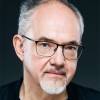 Karlheinz Essl
Karlheinz Essl 